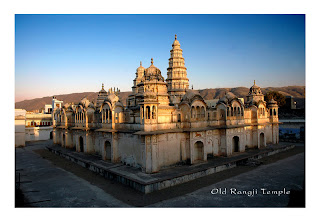Pushkar is a sacred town for the Hindus, situated 11 kms to the North-West of Ajmer. The charm of this sleepy, lakeside settlement so captivated the great Indian poet, Kalidas, that it found a place in his classic, Abhigyan Sakuntalam.
The Great Hindu epics of Mahabharat and Ramayana make references to this religious place regarded to be Adi Tiratha. Evidence points to its having existed since the Fourth century B.C. Lake in the inhospitable surroundings of a desert is no less than a miracle.
 Braham Temple (the only temple of Lord Brahma), Savitri Temple, Varah Temple, Pushkar Lake, Ghats, Apteshwar Temple, Rangnath Temple, Anasagar Lake, Rose Gardens, etc are prime attractions of Pushkar It also provides vacationers wonderful opportunity to indulge in exciting activities like camel safari ride on sand dunes of Thar Desert, trekking on picturesque hills, etc.
Braham Temple (the only temple of Lord Brahma), Savitri Temple, Varah Temple, Pushkar Lake, Ghats, Apteshwar Temple, Rangnath Temple, Anasagar Lake, Rose Gardens, etc are prime attractions of Pushkar It also provides vacationers wonderful opportunity to indulge in exciting activities like camel safari ride on sand dunes of Thar Desert, trekking on picturesque hills, etc.
Pushkar is also famous for its annual Pushkar Camel Fair. During this festival entire Pushkar comes alive. Visitors have wonderful opportunity to see trading of cattle/animals in the oldest form as barter system and several cultural shows depicting Rajasthani culture & tradition.
 According to Hindus faith, gods releases a swan with a lotus in its beak (mouth) and let it fall on the earth where the Lord Brahma would perform a grand Yagna. Lord Brahma performed penance here for 60,000 years to have glimpse of Radha Krishna. The place where the flower of lotus fell was called Pushkar.
According to Hindus faith, gods releases a swan with a lotus in its beak (mouth) and let it fall on the earth where the Lord Brahma would perform a grand Yagna. Lord Brahma performed penance here for 60,000 years to have glimpse of Radha Krishna. The place where the flower of lotus fell was called Pushkar.






